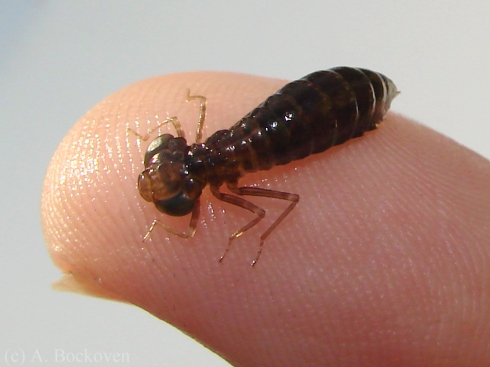
Katydid nymph on a leaf (Tettigoniidae).
I found this impressively large katydid nymph hanging out at a gas station. I thought he provided a particularly clear illustration on the difference between adult and juvenile wings in grasshoppers, katydids, etc. Adult and juvenile orthopterans can generally be distinguished by the presence or absence of wings. However, like other hemimetabolous insects, juvenile grasshoppers and co. gradually develop their wings as they move through larval molts, so later instars have signs of small, developing wings (wing pads or wing buds). Moreover, some orthopteran species are brachypterous (short-winged) or apterous (wingless) as adults, further complicating the matter. In collections, which generallly exclude immature insects, such species are notoriously underrepresented.
So the question is, how does one distinguish final instar grasshopper and katydid nymphs (those in the last juvenile stage prior to adulthood) from short-winged adults? Here’s the trick as I learned it from my labmate Paul Lenhart.

Final instar katydid nymph grooming its hind leg.
It took me a while to develop an eye for this, but the principle is fairly straight forward. In the last nymphal instar before adulthood, orthopteran wings “flip.” The hind wing (eventually to become the large, fan-folded flight structure) sits on top of the forewing (the elongate leathery tegmina which will protect the hindwing in adulthood). You can see this in the picture above. The main, costal vein of the hindwing is located dorsally (at the top), with a fan of veins running downwards, giving the characteristic “D” wing shape of a nymph.

Sexually dimorphic male and female grasshoppers mate.
After the molt to adulthood the wings flip again, tucking the hindwing under the forewing with the costal vein now located ventrally (to the bottom). Compare wings of the katydid nymph above to the more elongate, “U” shape of the forewing seen in these adult male and female lubber grasshoppers. The veins in the short forewing of the brachypterous female run mostly parellel, rather than fanning downwards.
Tags: Insects, Katydids, Nymphs



















Recent Comments